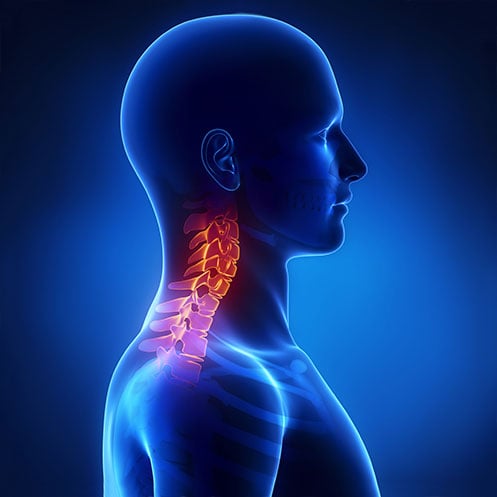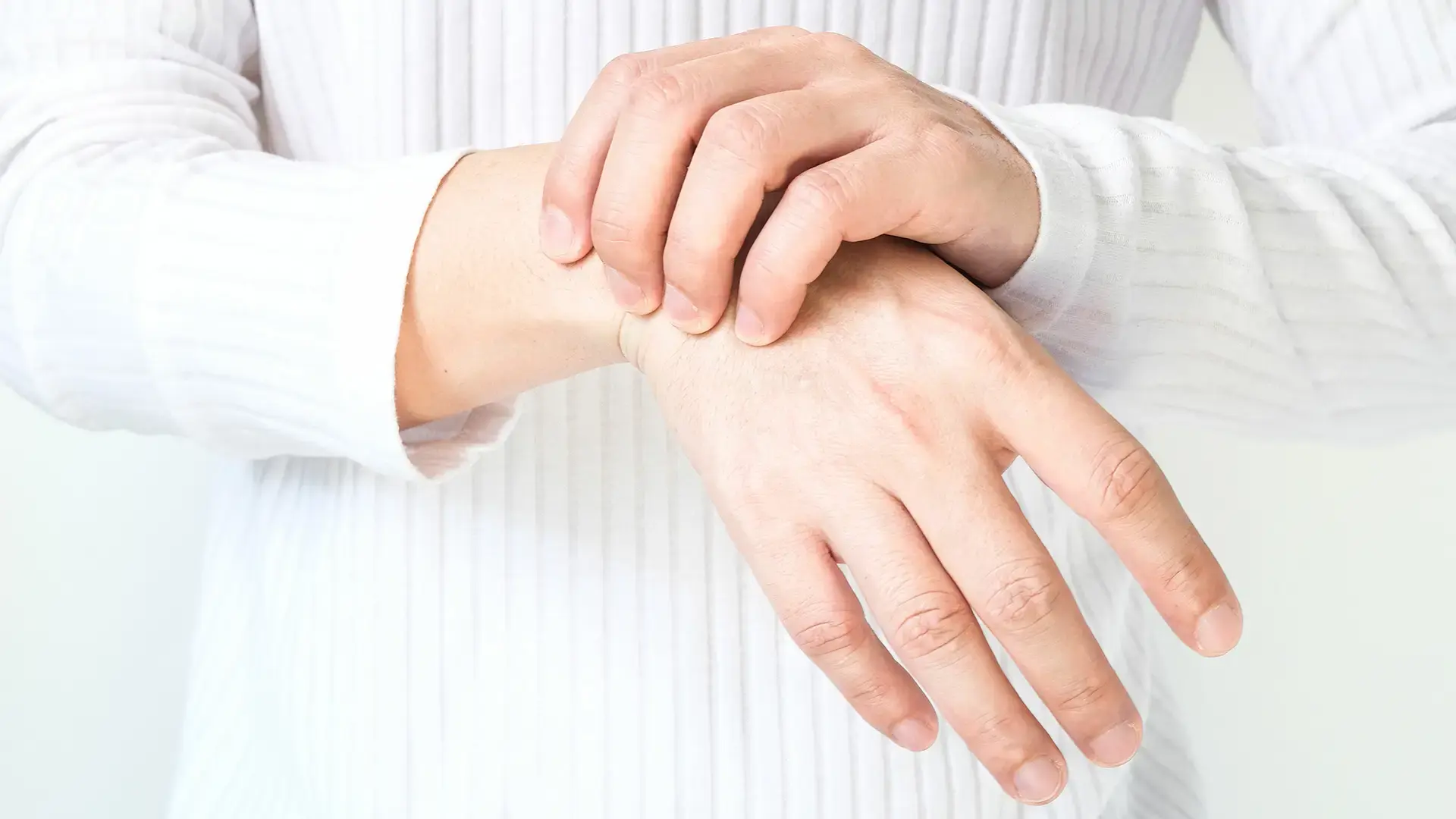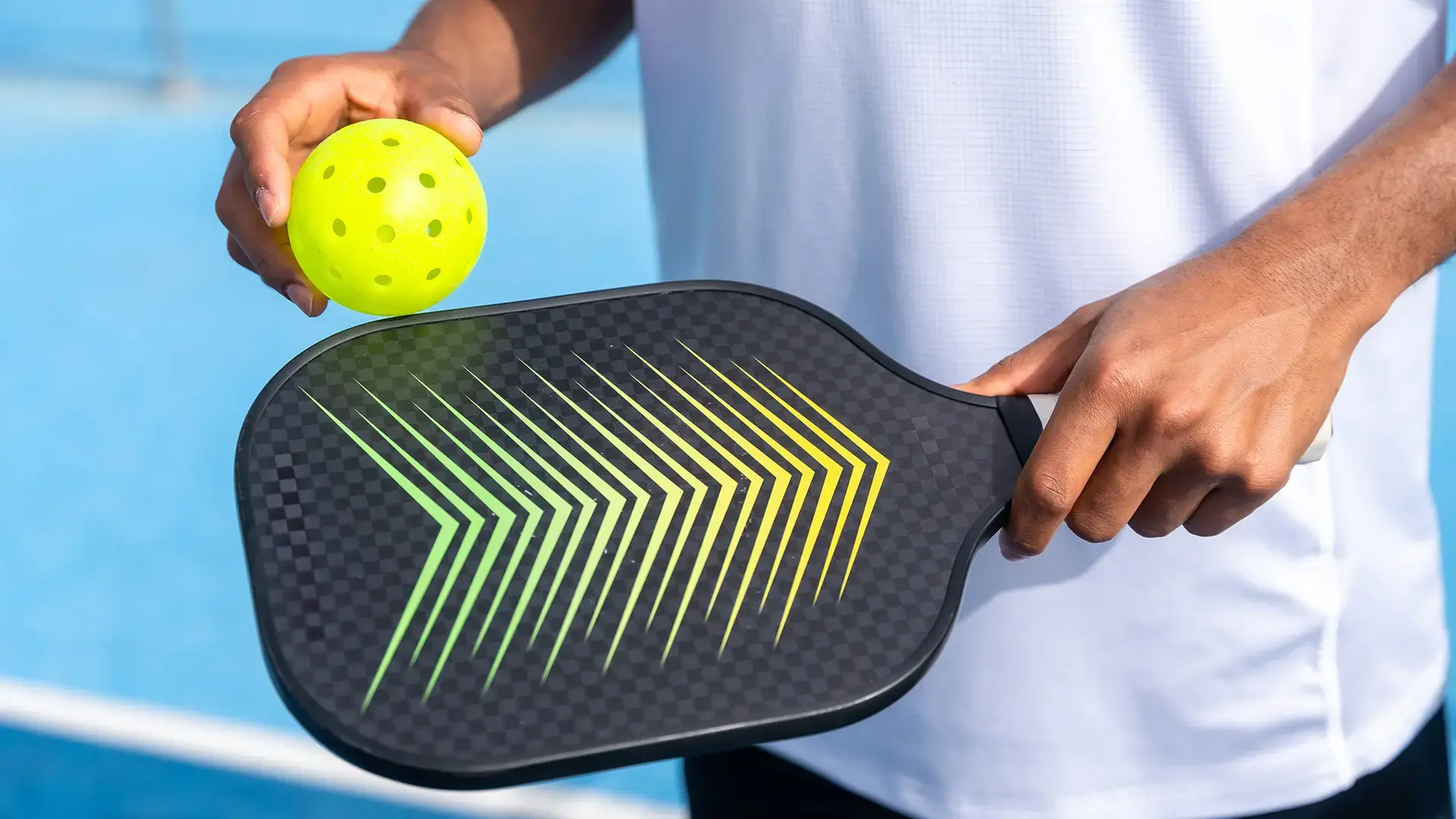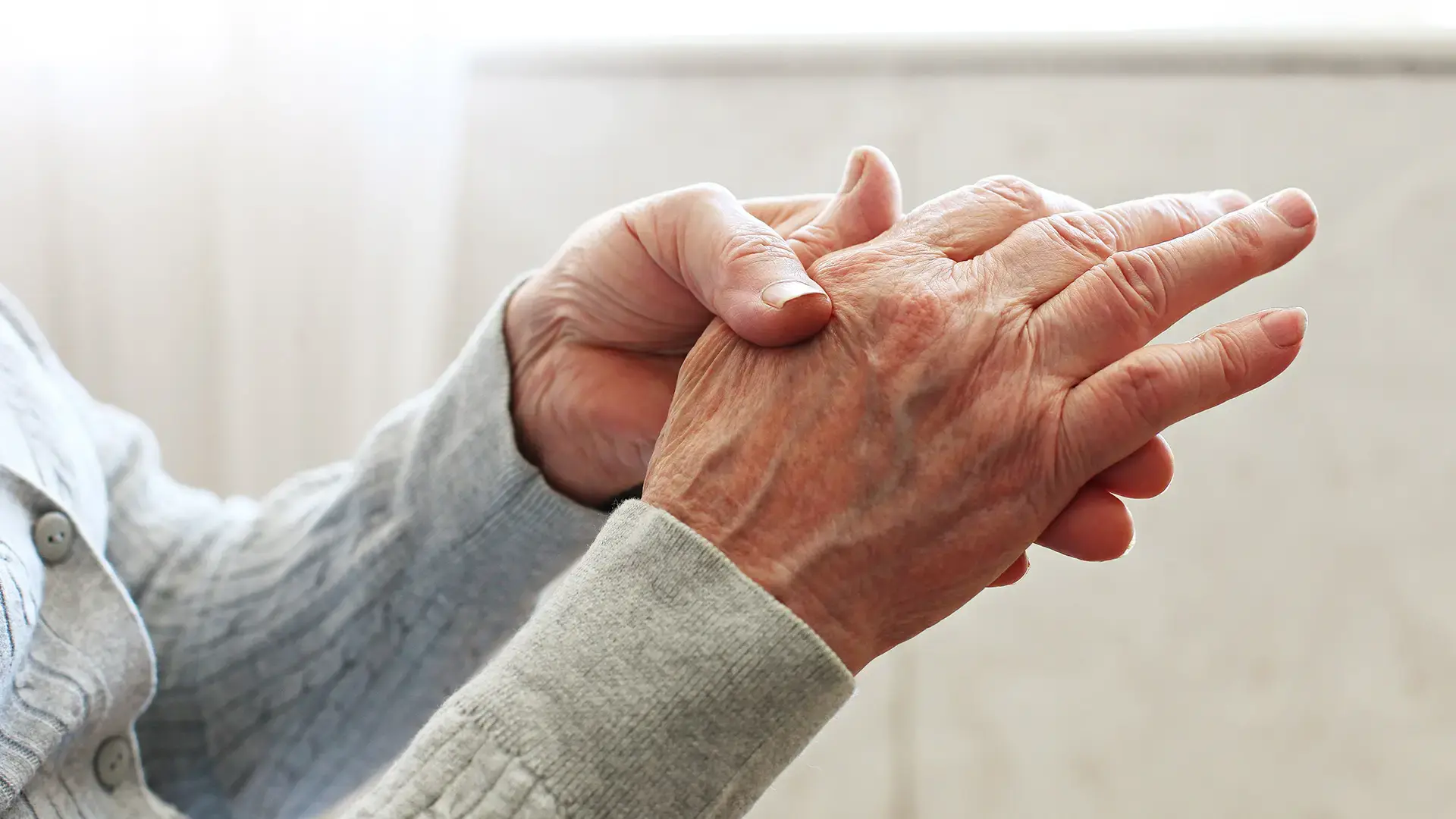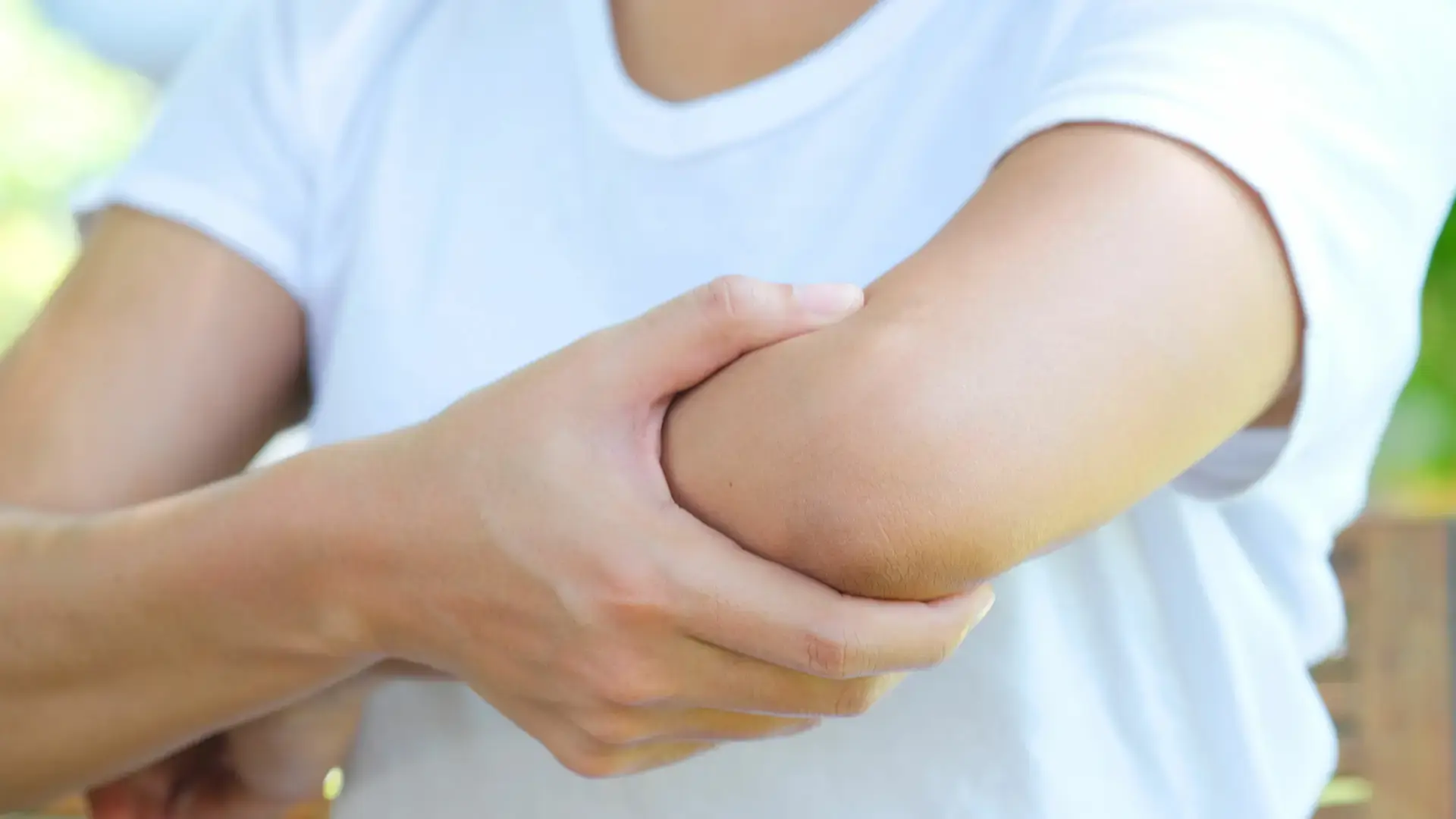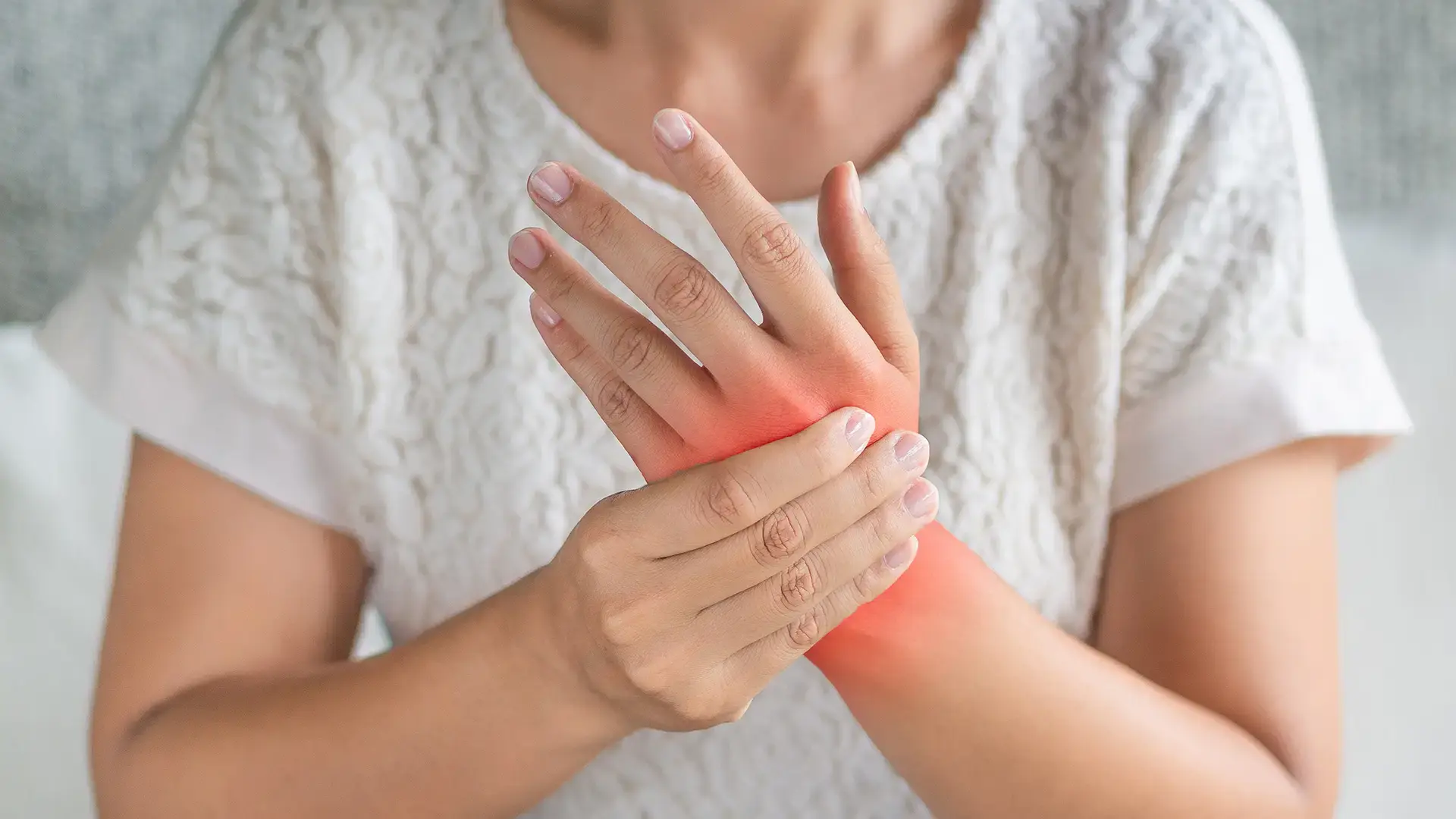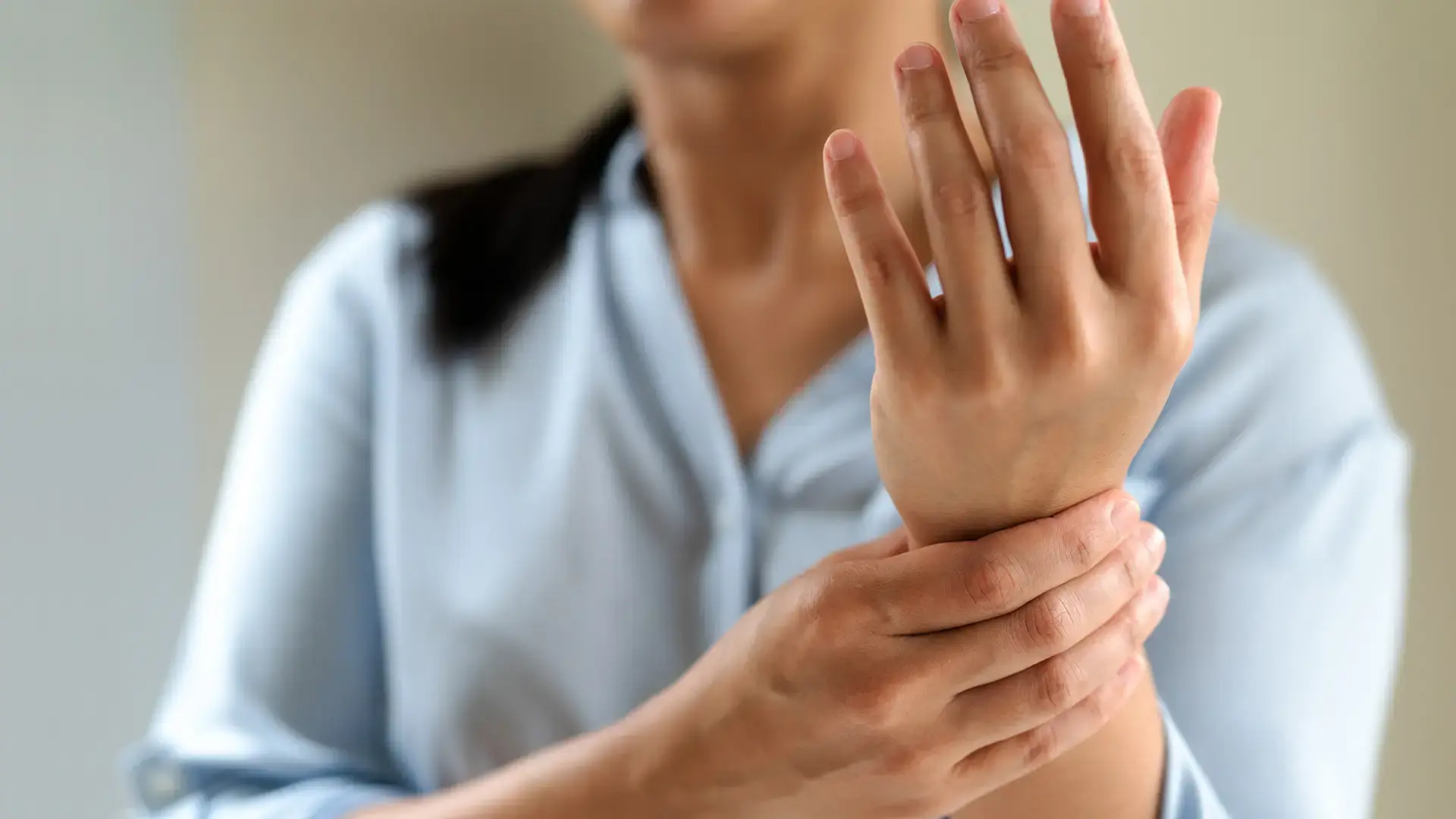Thumb CMC (Basal) Arthritis: Causes, Symptoms, and Advanced Treatment Options
Thumb CMC (carpometacarpal) arthritis, also known as basal thumb arthritis, affects the joint at the base of the thumb where it meets the wrist. For those living with this condition, everyday tasks that most of us take for granted, like opening jars, turning door knobs, and writing, become a daily challenge.
Fortunately, both surgical and non-surgical treatment options offer hope for those suffering from basal thumb arthritis. From conservative approaches like splinting and anti-inflammatory medications to more advanced surgical interventions, these treatments can help alleviate pain and restore thumb function.
As Dr. David Tsai, surgeon at The Center for Hand and Upper Extremity, shares, “I have had many patients with basal thumb arthritis come in and see me, desperate for relief so they can just do normal daily things again,” He continues, “and through proper diagnosis and the right treatment, we are able to restore that function and quality of life.”
With proper care and management, many individuals can regain mobility and return to daily activities with renewed confidence and reduced discomfort.
Understanding Thumb CMC (Basal) Arthritis
Basal thumb arthritis is a degenerative condition and form of osteoarthritis that commonly occurs due to wear and tear over time. Often, it affects individuals over 40, particularly women.
Central to this condition’s occurrence is the CMC joint. The CMC joint plays a crucial role in hand function, allowing for the thumb's unique range of motion and opposable grip. It is responsible for nearly half of all hand functions, enabling essential daily activities such as pinching, gripping, and manipulating objects. As this joint deteriorates, patients may experience pain, weakness, and reduced mobility, significantly impacting their quality of life and ability to perform routine tasks.
What Causes Arthritis in the Thumb
Regarding basal thumb arthritis, several risk factors play a role in its cause. These risk factors are typically associated with age, gender, and other genetic factors.
Age and Gender
Age is a significant risk factor, with patients over 40 being more likely to develop CMC arthritis. The risk increases further with advancing age. Gender also plays a role, as women are more prone to developing this condition, especially after menopause.
Genetic Factors
There is a genetic component to CMC arthritis risk. Having a family history of arthritis or joint problems increases the likelihood of developing CMC arthritis. Other specific genetic factors can influence how joints wear down over time, potentially increasing susceptibility.
Other Risk Factors
Some additional risk factors of basal joint arthritis include:
- Obesity, which places additional stress on joints
- Overuse of the joint, particularly in occupations or activities involving frequent gripping and pinching motions
- Previous injury or trauma to the thumb or hand
- Prior contralateral thumb CMC surgery
While these factors increase risk, they do not guarantee the development of CMC arthritis. The condition results from a combination of genetic predisposition, age-related changes, and cumulative stress on the joint over time.
Recognizing the Symptoms of Thumb CMC (Basal) Arthritis
“For many, basal joint arthritis symptoms develop gradually,” explains Dr. Tsai. The most prominent symptom is localized pain at the base of the thumb, particularly when doing things that involve gripping or pinching objects, like snapping fingers or turning keys.
As the condition progresses, a person may notice swelling and tenderness at the thumb's base, along with stiffness, especially after periods of rest or in the morning. A decrease in grip strength and reduced range of motion in the thumb are also common early indicators. Some people may feel a dull ache after prolonged use of the thumb or notice a gritty feeling or grinding sound (crepitus) when moving the joint. In some cases, there may also be visible enlargement or a bony appearance at the base of the thumb.
If left untreated, basal joint arthritis symptoms can significantly impact daily activities in several ways:
- Pain and discomfort: The condition causes pain at the base of the thumb, especially during activities that involve gripping, pinching, or grasping objects. This can make many routine tasks painful and difficult.
- Reduced grip strength: As arthritis progresses, individuals often experience a decrease in grip strength, making it challenging to open jars, turn keys, or hold onto objects securely.
- Limited range of motion: Stiffness and reduced mobility in the thumb joint can restrict the ability to perform tasks that require a full range of thumb motion.
- Difficulty with fine motor skills: Activities requiring precise thumb movements, such as writing, buttoning clothes, or using small tools, can become increasingly challenging.
- Impact on daily activities: Due to pain and reduced function, common tasks like dressing, cooking, cleaning, and personal grooming may become more difficult and time-consuming.
- Occupational challenges: For those whose work involves frequent hand use, especially gripping and pinching motions, thumb CMC arthritis can significantly impact job performance.
- Emotional and psychological effects: The inability to perform routine tasks independently can lead to frustration and decreased life satisfaction.
- Adaptations and compensations: People with thumb CMC arthritis often develop alternative ways to perform tasks or rely more heavily on their unaffected hand, which can lead to overuse issues in other joints.
- Reduced participation in hobbies and leisure activities: Activities like gardening, crafting, or playing musical instruments may become difficult or impossible due to pain and reduced function.
Overall, thumb CMC arthritis can profoundly impact a person's ability to perform daily functions, affecting both work and personal life. As such, the condition often requires individuals to adapt their routines and may necessitate the use of assistive devices or modifications to maintain independence in daily activities.
Diagnosing Thumb CMC (Basal) Arthritis
Thumb CMC (basal) arthritis is commonly diagnosed through physical examination and imaging tests. Here is an overview of the diagnostic process:
Physical Examination
The physical examination is a crucial first step in diagnosing thumb CMC arthritis. It typically includes:
- Joint palpation to assess tenderness and swelling
- Evaluation of thumb range of motion and strength
- Assessment for joint laxity or stiffness
- Inspection for visible deformities or subluxation
Another key component of the physical exam is the CMC grind test. In this test, the doctor applies pressure to the base of the thumb while rotating it. Pain or a grinding sound during this maneuver suggests CMC arthritis.
Diagnostic Imaging
After the physical examination, imaging tests are often used to confirm the diagnosis and assess the severity of the condition.
X-rays
X-rays are the primary imaging tool for diagnosing thumb CMC arthritis. They can reveal:
- Joint space narrowing
- Bone spurs (osteophytes)
- Subluxation of the joint
- Changes in bone density
X-rays may include dedicated thumb views to visualize the CMC joint better.
CT Scans
While less commonly used, CT scans can provide more detailed images of the bone structures. They may be employed in cases where:
- X-ray results are inconclusive
- More detailed imaging of the joint is needed for surgical planning
- There is a need to assess complex fractures or deformities associated with advanced arthritis
Additional Considerations
The doctor will also take a comprehensive medical history, including symptoms, prior injuries, and activities exacerbating the pain. In some cases, other tests like MRI might be used, especially if soft tissue damage is suspected.
By obtaining a formal diagnosis and treatment plan early, patients with thumb CMC arthritis can potentially slow disease progression, maintain better hand function, and improve their overall quality of life.
Conservative Treatment Options for Thumb CMC Arthritis
Having basal thumb arthritis does not necessarily mean needing surgery. There are many non-surgical treatment options available for those with basal thumb arthritis.
Dr. Tsai shares some of the most common treatment options:
- Orthotics and splinting: Wearing a brace or splint can help support the joint and reduce pain, especially for mild to moderate cases.
- Exercise therapy: Specific exercises to strengthen the thenar muscles and improve thumb stability can help reduce joint loading and inflammation.
- Activity modification: Adapting movements to protect the CMC joint, such as using two hands instead of one to hold objects or sliding items rather than lifting them.
- Assistive devices: Using tools like jar twisters or key turners to reduce stress on the thumb joint.
- Medications: Nonsteroidal anti-inflammatory drugs (NSAIDs) can help reduce pain and inflammation.
- Steroid injections: Corticosteroid injections into the joint can relieve pain and reduce inflammation.
- Physical therapy: Sessions focused on exercises and achieving more stable thumb opposition.
- Home exercise program: Daily exercises prescribed by a healthcare provider to maintain joint function.
- Regenerative treatments: Some clinics offer innovative treatments that stimulate healing using platelet-rich plasma (PRP) or bone marrow concentrate containing stem cells.
These non-surgical approaches are often tried before surgical options are considered. Many patients experience satisfactory long-term outcomes with these conservative treatments, with studies showing sustained benefits over five years or more for pain reduction and improved hand function.
Advanced Surgical Treatment Options
In some cases of thumb CMC arthritis surgery may be necessary. These options are typically recommended when conservative non-surgical treatments have failed, or there is severe pain, advanced joint damage, or loss of function.
In these instances, a few different surgical procedures will be considered depending on the arthritis severity and patient’s preferences. These include:
- CMC joint denervation: This procedure targets the nerves around the CMC joint to reduce pain by interrupting the pain signals from the arthritic joint. It can be a valuable option for patients with thumb CMC arthritis seeking pain relief without undergoing joint replacement or reconstruction. It is an excellent option for those seeking a minimally invasive approach that allows quicker recovery and a faster return to daily activities, particularly when joint damage is less severe.
- Trapeziectomy with ligament reconstruction: This procedure involves removing the painful, arthritic trapezium bone and stabilizing the thumb CMC joint using nearby tendons or specialized implants. It’s often chosen to relieve pain and improve joint stability in moderate to advanced arthritis cases.
- Osteotomy: In this surgery, the surgeon cuts and repositions the first metacarpal bone (the bone of the thumb), aiming to redistribute forces across the joint more evenly, reducing stress on the joint and potentially alleviating pain.
- Joint replacement surgery: This procedure, also known as arthroplasty, involves removing the damaged joint surfaces and replacing them with artificial components. This is usually reserved for patients with advanced arthritis who have not responded to other treatments.
- Arthroscopic debridement with fat grafting: This minimally invasive procedure involves using an arthroscope to clean out damaged tissue from the joint. Following debridement, fat grafting is performed to introduce natural cushioning and promote healing, which may alleviate pain and improve joint function, especially in early-stage arthritis.
Each surgical option has specific indications and potential benefits. The choice of procedure is typically made in consultation with a hand surgeon based on the patient's age, activity level, and extent of joint damage.
The typical recovery process for thumb CMC arthritis surgery involves keeping the hand elevated, wearing a splint for 4-6 weeks, and then starting gentle exercises under the guidance of a hand therapist. Full recovery can take up to 6-12 months, with follow-up appointments with the surgeon to monitor progress and adjust the treatment plan as needed.
Innovative Therapies and Emerging Treatments
Several new and experimental treatments are currently being explored for thumb CMC arthritis as well.
One of these includes regenerative treatments, which are innovative non-surgical options using the body's healing agents. Platelet-rich plasma (PRP) injections are another emerging treatment option that involves injecting concentrated platelets from the patient's blood into the affected joint to promote healing and reduce inflammation.
Stem cell therapy is another new innovative treatment for thumb CMC arthritis being explored. Like PRP injections, this approach uses stem cells extracted from the patient's bone marrow or adipose tissue to regenerate damaged cartilage potentially.
Finally, scientists are exploring ways to deliver anti-inflammatory medications directly to the affected joint through targeted drug delivery, potentially reducing systemic side effects.
While these treatments show promise, many are still in experimental stages and require further research to determine their long-term effectiveness and safety for treating thumb CMC arthritis.
Managing Pain and Improving Function
If you are living with basal thumb arthritis, then you know just how painful it can be to perform certain activities. From typing and opening jars to even turning a door handle, basal thumb arthritis can induce and impair functional mobility for even the smallest daily tasks.
Fortunately, there are some easy pain management strategies one can utilize each day to help reduce discomfort and improve overall function:
- Ice therapy: Applying ice for 5-15 minutes several times daily can help reduce inflammation and pain.
- Heat therapy: Using warm compresses or paraffin wax baths can help relax muscles and increase blood flow.
- Over-the-counter anti-inflammatory medications: NSAIDs like ibuprofen can help manage pain and reduce inflammation.
- Gentle range of motion exercises: Slowly moving the thumb through its full range of motion to maintain flexibility.
- Thumb opposition exercises: Touching the thumb to each fingertip to improve dexterity.
- Grip strengthening: Using a soft stress ball or putty to squeeze and release gently.
- Thumb splints or braces: Wearing a specialized thumb CMC brace to support and limit thumb movement, especially during activities or at night.
- Jar openers: Using specially designed tools to reduce strain when opening jars.
- Key turners: Employing devices that provide leverage for turning keys without putting pressure on the thumb joint.
- Ergonomic pens and pencils: Using writing instruments with larger grips to reduce stress on the thumb.
By incorporating these strategies, exercises, and devices into their daily routines, people can better manage bothersome symptoms of thumb CMC arthritis. However, it is important to consult with a healthcare provider or hand therapist for personalized advice and to ensure exercises are performed correctly.
Conclusion: Hope and Help for Thumb CMC Arthritis Sufferers
“Basal thumb arthritis does not have to consume your life,” encourages Dr. Tsai, “Positive outcomes are entirely possible with the right approach and treatment.”
If you or someone you know is living with basal thumb arthritis, know you are not alone. Take the next step today by contacting Dr. Tsai today and scheduling a consultation. As he shared, with the right approach, it is possible to restore mobility, reduce inflammation, and resume normal activities pain-free.
At The Center for Hand & Upper Extremity Surgery, we treat CMC basal thumb arthritis, finger arthritis, shoulder and elbow arthritis, wrist arthritis, chronic pain, and more.
If you are ready to explore surgical options for arthritis, contact Dr. Tsai and the surgical care team at The Center for Hand & Upper Extremity Surgery, part of The Institute for Advanced Reconstruction, for a consultation today.
